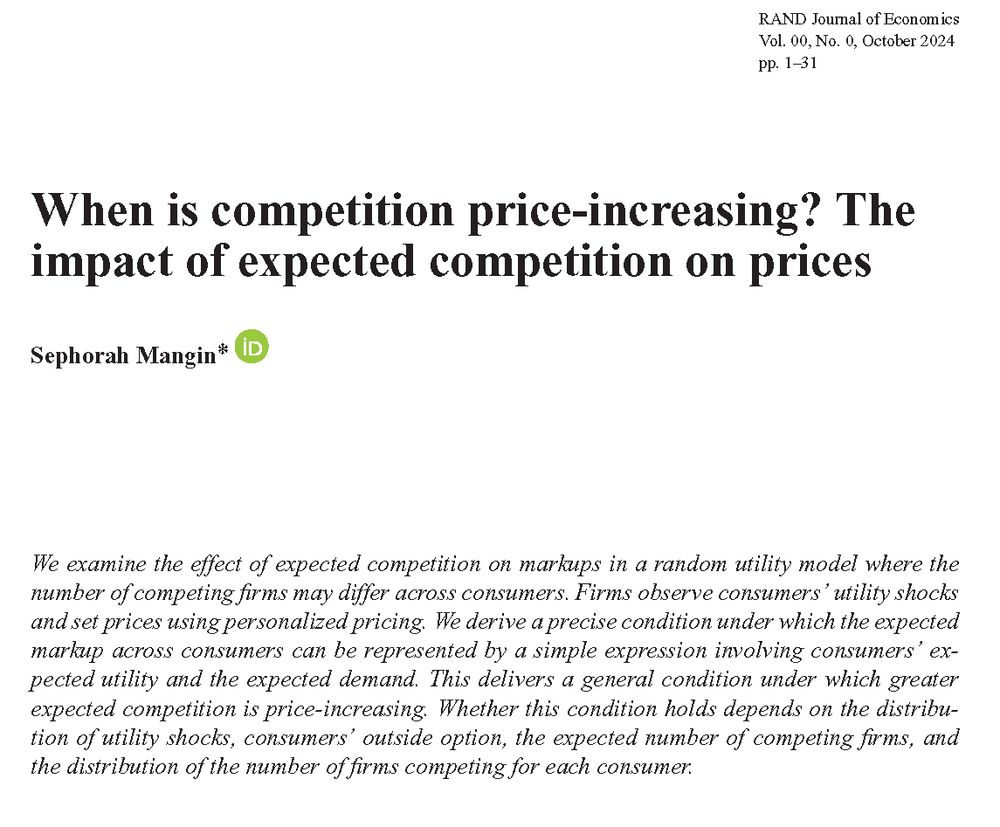
Website: http://www.sephorahmangin.info
Suppose consumers draw utility shocks from a uniform distribution.
Greater consumer heterogeneity increases the average markup.

Suppose consumers draw utility shocks from a uniform distribution.
Greater consumer heterogeneity increases the average markup.
For example, the paper delivers a generalization of a result on markups in Gabaix et al.

For example, the paper delivers a generalization of a result on markups in Gabaix et al.
For example, suppose the number of options an agent gets is a random variable that is negative binomial.
Suppose options are drawn from a Pareto distribution.
The EVD takes this general form. 👇

For example, suppose the number of options an agent gets is a random variable that is negative binomial.
Suppose options are drawn from a Pareto distribution.
The EVD takes this general form. 👇
Here is an example of a new family of EVDs. 👇

Here is an example of a new family of EVDs. 👇
If the average number of options is large, do such outcomes change when some agents have more options than others?
1/ A thread about this paper 🧵

If the average number of options is large, do such outcomes change when some agents have more options than others?
1/ A thread about this paper 🧵


